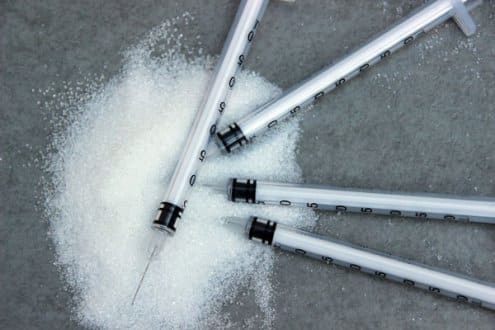Alcohol changes how your body balances water. For people navigating diabetes insipidus and alcohol consumption, even moderate drinking may increase urine output, thirst, and dehydration risk. This guide explains what happens physiologically, how risks differ by type, and practical steps for safer choices.
Key Takeaways
- Alcohol suppresses vasopressin, increasing urine output and dehydration risk.
- Central and nephrogenic forms face similar dehydration risks, for different reasons.
- Sleep disruption, headaches, and dizziness may intensify after drinking.
- Plan hydration, pace alcohol intake, and know red-flag symptoms.
- Discuss co-medications and kidney status with your healthcare provider.
Diabetes Insipidus and Alcohol Consumption: What Happens
Alcohol suppresses arginine vasopressin (antidiuretic hormone), the hormone that helps kidneys reabsorb water. When this signal drops, the kidneys pass more dilute urine, even if you are already losing fluids from diabetes insipidus (DI). As a result, dehydration can develop quickly, raising the chance of dry mouth, fatigue, and headaches.
Risk varies with dose and pace. Rapid intake (shots or strong cocktails) can amplify diuresis, while drinking with meals tends to blunt spikes. Individual factors matter, including baseline urine volume, electrolyte balance, and medications. For a broader overview of the condition, the NIDDK overview explains diagnostic fundamentals and subtypes in accessible detail.
How Alcohol Alters Hormones and Kidneys
Alcohol can reduce vasopressin release from the pituitary and alter kidney tubule responses, which promotes water loss independent of blood sugar. This effect may start within an hour of drinking, especially on an empty stomach. People with DI already have impaired water regulation, so layered suppression increases total urine volume and electrolyte shifts.
Because vasopressin signaling influences sleep and circadian water handling, evening drinking can also disrupt overnight hydration and sleep quality. For background on how alcohol suppresses antidiuretic hormone, see this concise discussion from a national alcohol research program on alcohol’s physiologic effects.
Tip: Track your fluid intake alongside symptoms for 24 hours after drinking. Simple notes help you spot personal thresholds to avoid.
Central vs Nephrogenic: Different Risks
In central diabetes insipidus, the pituitary produces too little vasopressin, so alcohol’s added suppression can be significant. This combination may lead to pronounced thirst, frequent nighttime urination, and headaches from dehydration. People using desmopressin (a synthetic vasopressin analog) may also experience variable effects if drinking alters medication timing or fluid choices.
Nephrogenic DI involves reduced kidney responsiveness to vasopressin. Alcohol still promotes diuresis through direct renal effects and increased fluid intake during social drinking. The overall result remains increased urinary losses. For subtype distinctions and mechanisms, you can review Central Neurogenic Diabetes for pathophysiology context at Central Neurogenic Diabetes, and see Nephrogenic Diabetes Insipidus for subtype-specific features, which helps tailor precautions.
Risks and Complications to Watch
Dehydration is the immediate concern. Reduced total body water can trigger dizziness, dry mouth, and postural lightheadedness. Electrolyte imbalance may follow, particularly sodium shifts, which can worsen fatigue and confusion. Over time, recurrent dehydration stresses the kidneys and cardiovascular system.
If you live with established kidney disease, the safety margins narrow further. Alcohol may also interact with diuretics, lithium, and other agents that influence water balance. For an organized overview, see Diabetes Insipidus Complications to understand downstream effects, and consider the kidney health reminders in National Kidney Month for practical risk-reduction steps. The National Kidney Foundation summarizes dehydration and kidney stress with patient-friendly guidance.
Distinguishing from Diabetes Mellitus
People often confuse the two conditions because both involve thirst and frequent urination. The mechanisms differ: diabetes mellitus centers on insulin and blood glucose, while DI centers on water regulation and vasopressin signaling. Alcohol affects both, but the relevant risks and monitoring strategies are not the same.
For terms clarity and examples, see Diabetes Mellitus vs Diabetes Insipidus for comparison details, and review Different Types of Diabetes to understand how glucose disorders vary. If you also manage glucose levels, device options at Glucose Monitors and Meters can help align alcohol intake with monitoring routines. For symptoms and care pathways specific to DI, see Diabetes Insipidus Signs for structured evaluation steps.
Practical Drinking Guidance and Safety
Set a personal plan before events. Eat beforehand, alternate alcoholic with nonalcoholic fluids, and cap total drinks based on your past responses. Space each serving over at least an hour. If you use desmopressin, coordinate timing with your prescriber to prevent water retention or overcorrection.
Some medicines and conditions magnify risks. Loop diuretics, certain antidepressants, and lithium can affect water balance. Review each agent with your clinician. For example, loop diuretics increase urine output; for reference on this drug class, see Lasix when discussing diuretic thresholds with a clinician. If you also use metabolic therapies, alcohol-use cautions in Ozempic and Alcohol offer general principles that apply across therapies.
Note: Avoid drinking to manage stress or sleep. Alcohol may worsen nighttime urination, hydration status, and next-day fatigue.
Hydration, Symptoms, and Sleep
Plan hydration proactively. Carry water, sip regularly, and add electrolytes when urine becomes persistently clear and frequent. This helps replace losses without overloading free water. If you notice dry mouth or headaches after modest alcohol intake, slow down and rehydrate before continuing.
Sleep quality often suffers after evening drinks. Nighttime awakenings for urination can fragment rest, which compounds fatigue and dizziness the next day. Simple changes help: an early last drink, water before bed, and cool bedroom temperature. For self-management ideas, see Tools for Better Care for planning routines that support hydration, rest, and symptom tracking.
Safer Beverage Choices and Alternatives
Choose lower-alcohol options and smaller servings. Wine spritzers, low-ABV beer, or half-strength cocktails reduce total ethanol exposure. Nonalcoholic beer can still cause urination due to volume, so pace intake. Mocktails made with seltzer, citrus, and bitters offer social alternatives without the hormonal effects of alcohol.
Focus on hydration-positive options. Add a pinch of salt and citrus to water for flavor and electrolytes. Unsweetened teas and seltzers provide variety without sugar spikes. For broader ideas, our guide on Alcohol and Weight Loss discusses pairing beverages with meals to moderate intake, which supports steadier hydration.
When to Seek Care and Red Flags
Stop drinking and rehydrate if you develop severe thirst with minimal relief, persistent vomiting, confusion, or muscle cramps. Worsening fatigue, palpitations, or weakness may signal electrolyte imbalance. People with kidney disease or heart conditions should be especially cautious, as dehydration can destabilize blood pressure and renal function.
Contact a clinician if symptoms escalate despite fluids, or if you cannot keep liquids down. Sudden changes in urination patterns, new nighttime incontinence, or recurrent headaches after small amounts of alcohol warrant evaluation. For broader symptom context, the structured overviews in Diabetes Insipidus Signs can guide what to document before your visit.
Recap
Alcohol promotes diuresis and can compound the water-balance challenges of DI. Thoughtful pacing, consistent hydration, and medication-aware planning help reduce risks. Track your individual responses and adjust limits based on symptoms.
Use this guidance as a starting framework. Align it with your clinician’s advice, kidney status, and medications. Small changes in timing and beverage choice can meaningfully improve comfort and safety during social occasions.
This content is for informational purposes only and is not a substitute for professional medical advice.


